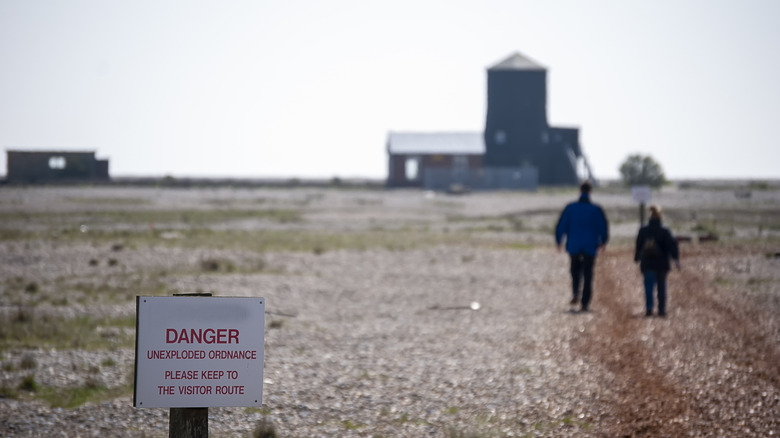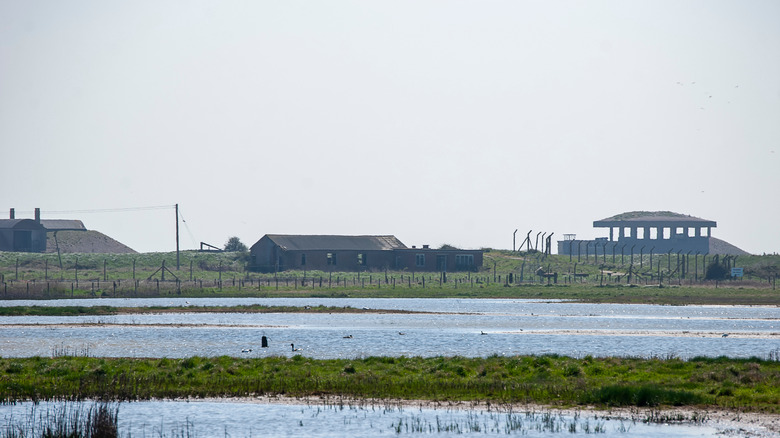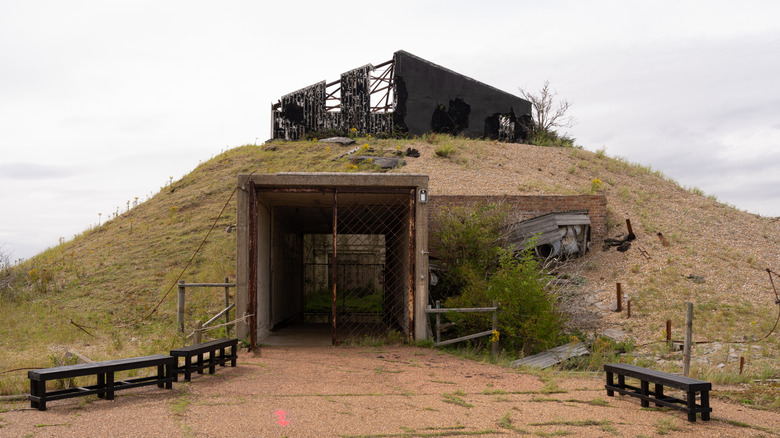Untamed Nature And Weird Ruins Make This Coastal Destination Best Known As 'Britain's Area 51'
Separated from the mainland by the River Alde, Orford Ness might not look all that distant on the map for an incredible London day trip. But once you get out into the Suffolk countryside beyond the county town of Ipswich, the largest vegetated shingle spit in Europe feels much farther away. It takes forever to get anywhere on the country roads and the sky opens out vastly above the fields and woodland, making you feel like a tiny speck on the rural landscape. Dunwich, Britain's Atlantis, is a little further north, but perhaps nowhere along the U.K.'s coast feels more remote than Orford Ness, a nature reserve that was once the site of top-secret military experiments.
The spit, nicknamed the "Isle of Secrets" and "Britain's Area 51," is plainly visible from the quayside in Orford, a lovely Suffolk village with a fine Norman castle and a few decent pubs. Yet Orford Ness was off-limits before it was abandoned by the Ministry of Defence in the 1980s and taken over by the National Trust in 1993. Even today, the island is closed during the winter months and the only official way to reach it in open season is by a pre-booked ferry. The fragile protected landscape is a draw for nature lovers, constantly changing through the process of longshore drift. Yet it is the enigmatic ruins left behind from decades of highly-classified research that make it such an eerie destination for a brisk walk.
The secretive history of Orford Ness
Orford Ness was the site of military testing as far back as the First World War when it was used for early experimentation into wartime aviation. During the Second World War, it gained comparisons with Bletchley Park due to its importance to national security and the fight against the Third Reich. For decades, ballistics and explosive devices were tested across the windswept landscape, and there are still signs warning visitors about unexploded ordnance. The clandestine operations on the spit naturally provoked much speculation on the mainland. One myth suggests that Nazi troops landed on the island only to be forced back by a blazing wall of fire — a story debunked by the release of classified documents in 1993.
During the Cold War, Cobra Mist, an over-the-horizon radar system, had its array of instruments trained on Russia. Britain's first atomic weapon, Blue Danube, was developed at the site, and rumors persist that Trident nuclear missiles were tested in the mysterious concrete pagodas in the early 1980s. Much of what happened on Orford Ness remains classified information.
Nowadays, the island's abandoned facilities stand in sinister contrast to the flat expanse of marshland and shingle. Cattle graze near the brute bulk of the pagodas, and a colony of grey seals have made a home on the shingle. Nature will eventually erase the buildings that make grim blots on the coastline, just as it did with the colorful 200-year-old Orfordness Lighthouse, demolished in 2020 due to sea erosion.
Visiting Orford Ness today
W.G. Sebald visited Orford Ness in the early 1990s and wrote about it in "The Rings of Saturn," describing a place of profound silence that even local fishermen shunned. Sebald imagined it as a post-apocalyptic landscape with its offices, shelters, ammo dumps, warehouses, and ominous heavy-duty bunkers left to the elements. Some visitors have likened the most striking structures to Mayan pyramids, burial mounds, or ancient temples, adding to the otherworldly atmosphere.
In 2024, the National Trust celebrated a record-breaking year of over 13,400 visitors to the isolated spot. Yet it is still a place where you might only see a handful of curious walkers during a whole day. The sense of desolation is offset somewhat by art installations dotted around, but otherwise facilities are basic. There are toilets and a bookshop, but no tearoom, gift shop, or any other touristy comforts.
If you plan a visit to Orford Ness, book ahead for the ferry and prepare as if going on a day's hike. Bring a packed lunch, water, and decent boots, as trudging across loose shingle can be taxing. Also dress with the weather in mind as the landscape is very exposed, and it can get rather fresh on the Suffolk coast, even in summer. Lastly, keep an eye on the time. The National Trust website helpfully advises you not to miss the last ride back in the evening. With its eerie reputation, Orford Ness is not the kind of place you want to get stranded overnight.


